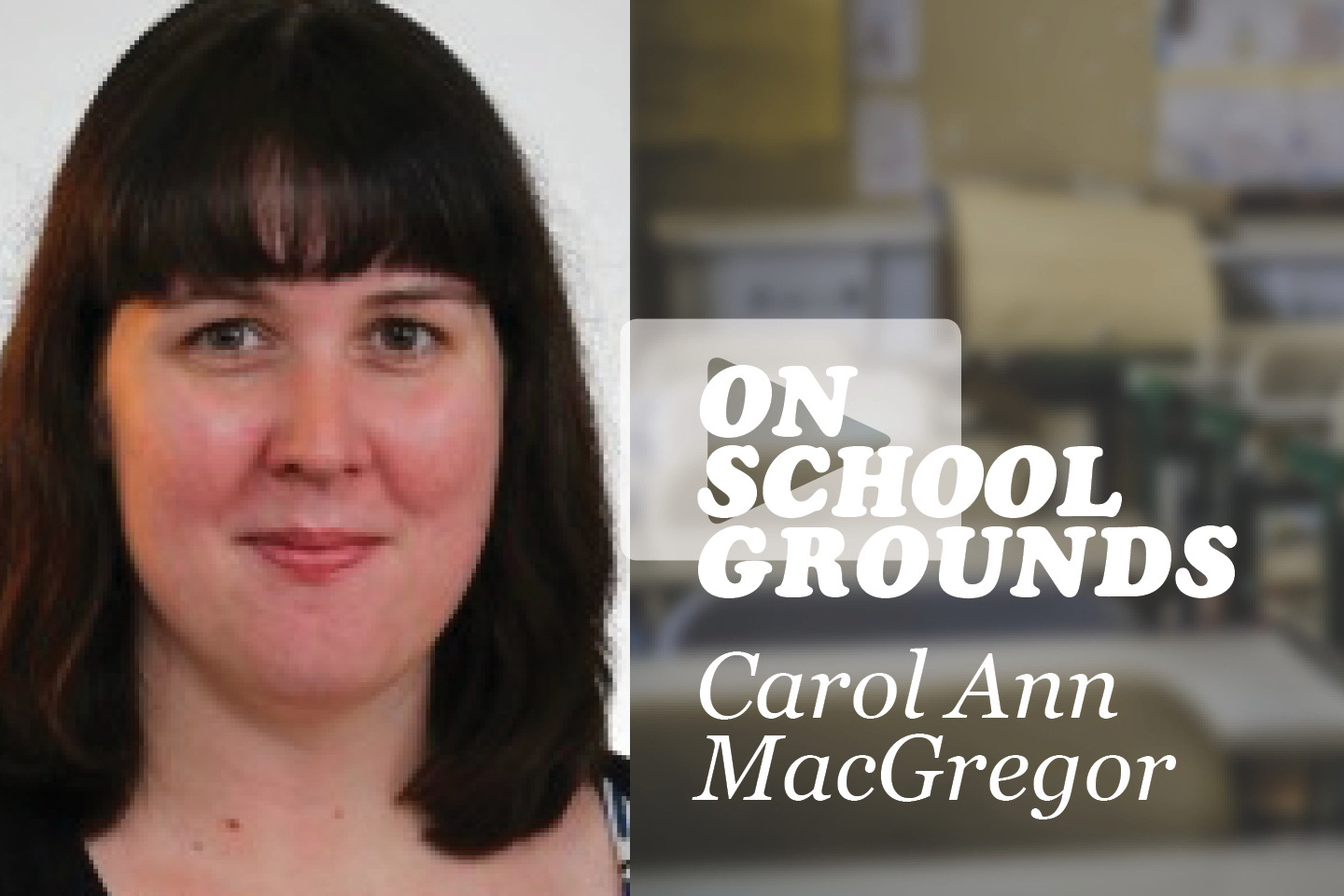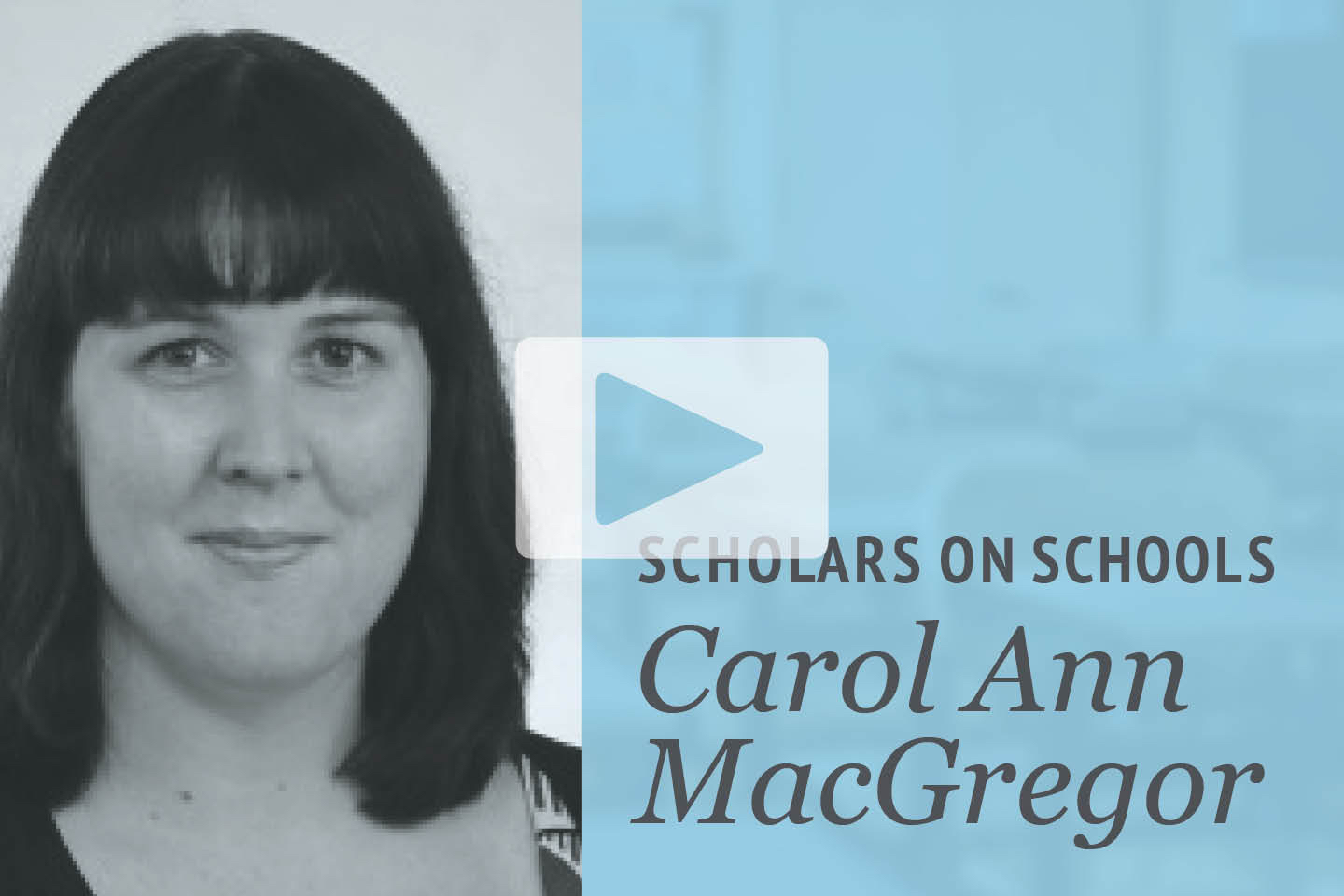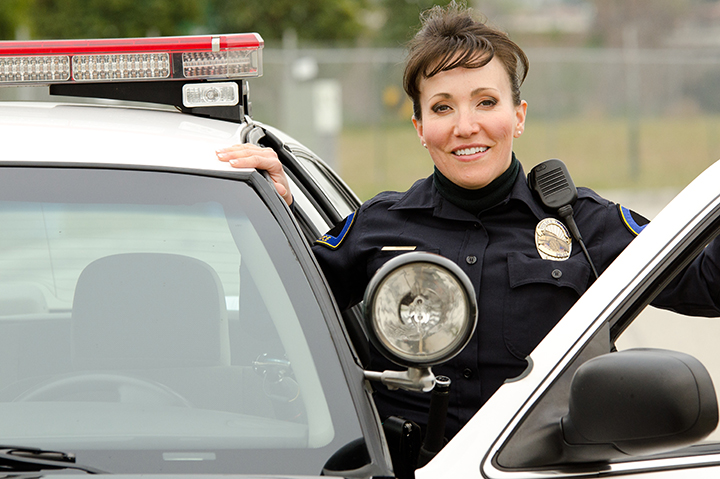To receive a free copy of the chapter of The Content of Their Character that corresponds with this interview, please click here and sign up for our Weekly Digest.
What follows is a lightly edited transcript of this interview, which was conducted on December 20, 2018.
Angus McBeath: Today I’m with Dr. Carol Ann MacGregor, Assistant Professor of Sociology at Loyola University in New Orleans. Dr. Carol Ann MacGregor researched a sample of Catholic high schools across the United States. That involved intense interviews, visitations, conversations, observations of what she saw in American high schools—American Catholic high schools—in terms of moral formation of young people. I’m going to ask a few questions now, Carol Ann, if I might. You studied, through your research, schools across the United States. Do you recall if there were any surprises that you encountered in your research, in your studies, in your visits? Anything you found in these high schools that you hadn’t expected?
Carol Ann MacGregor: That’s a great question. I think the literature on Catholic education suggested that these were going to be places that were very good at doing this kind of formative work—sort of a faith-based, values-based education; small schools; really caring faculty. The existing research on the topic sort of suggested that the outcomes would be positive.
But I think one of the surprises that I found on the ground is how taken for granted it sort of was. I anticipated going into schools and seeing all of this very direct evidence of this happening, you know—sort of policies and procedures and meetings where people talked about it—but for many of these schools it was much more nuanced; it was sort of baked into their culture. They were having these very positive outcomes, but it wasn’t necessarily that easy to tie it to a specific policy or overt discussion people were having.
AM: So it was in the DNA of the school culture?
CAM: Yes, that’s definitely what it seemed like for many of the schools. Particularly schools who have been around for a long time and sort of had cultivated their approach over decades and generations.
AM: Can you illuminate for us what those positive moral outcomes that you saw being generated as a result of the work of the schools?
CAM: Sure. Well, most Catholic high schools in the United States are very focused on getting students into colleges, but one thing that really stood out when I interviewed students and asked them about, sort of, What do you think your teachers want for you after you graduate? their answer was always twofold: They want me to go to a good college, but more than that, they want me to be a good person. Or, My goal here is not just to be—to go get a good job, but to treat people well throughout the course of my life.
So there was a clear message to students—or students were taking away—that there was more to education and more to living a good life than just going to college and getting a job.
AM: Okay. Now would you say that you detected a sense of altruism in the students—that they not just wanted to be a good person, but they wanted to do good to others?
CAM: Yes, definitely. You could see that in both informal and formal ways. Sort of on the informal side, many people describe this school—and this would be administrators, teachers, and students—as “like a family,” and people were very caring and selfless towards their peers; they’ve got lots of good examples of that in the study. And then in more formal ways, many students in these schools were involved in serving their local community through various types of outreach, depending on the sort of city that they were located [in].
AM: Thank you. Many principals and teachers struggle with attempting to eliminate, reduce, the incidence of bullying in schools, and after school, as well, and online bullying and Facebook bullying and social media bullying and so on, because it’s so hard and detrimental for students. Did you detect in any of these Catholic schools a sense that there was a bullying problem? Or is that something they had dealt with, you think, successfully?
CAM: There was definitely a range, but we had a question in our interview protocol that asked about this, so we did hear about this from most of the folks we interviewed, and some schools were really thinking about this: not so much about the piece that happens on school grounds, that most schools had some pretty well-established policies about what was acceptable and what was not acceptable and strategies for monitoring it. It was the after-hours and the social media aspect of it where schools were thinking through how to do that.
So some schools had actually sort of extended their scope of surveillance, if you will, to anything that a student did. So there were some schools who would give in-school disciplinary actions, like a detention or suspension, for things that happened on social media outside of the school context because they felt that was against their code of character or code of ethics—you know, it’s named different things in different places. So I think it’s an issue for all educators, but for the most part, the Catholic school administrators I spoke to were dealing with it off-site, not on-site.
AM: OK, thank you for that clarification. Now you’ve noted in your chapter in the book The Content of Their Character—available through Amazon.com—you noted that Catholic school teachers and Catholic staff tended to believe that what they were offering students was superior to what was found in other types of schools. That is something you noted in your chapter in the book. Tell me about how that works.
CAM: Yeah, so many of the teachers that I spoke with felt very strongly that what they were doing was their vocation, that it wasn’t just a job—that if it was just a job they could go get a job in the local public school that would pay them more for doing similar kinds of work. But they thought that what they did every day was very special in terms of shaping young people’s views of the world and the trajectory of their lives in a lot of ways. And so when asked kind of, What’s the difference between public school and a Catholic school?…they always had some kind of sense that what they were doing there…was a lot of what happened at public school—but a little bit extra. So, great at college prep just like a top public school, but you know, also focusing on other aspects of education beyond just straightforward academic achievement.
AM: OK, thank you. From your view, what was the position of most of the schools you studied on moral authority on social issues?
CAM: This was really interesting. You know, knowing official church teaching on issues like same-sex marriage and abortion, I was curious about how the schools approached those issues. In many cases, I would say, the general approach was an acceptance of respectful dissent. So most educators felt like it was acceptable for a student to say or to hold a position that was different than official church teaching, but they viewed it as a teachable moment. If a student was going to hold one of those views or share a view that was different than official church teaching, they should do so in an educated and respectful way. So they should have evidence to support their claims, they should convey their position in a way that was respectful of other views, and they should make a really concerted effort to at least understand what the other position was, in addition to their own.
AM: And students didn’t feel any reluctance to voice a position that was different than church doctrine?
CAM: No, not at most of the schools that I went to. You know, there were a lot of students who were agnostic on the issues, of course, but in particular, in attitudes towards homosexuality, the students I spoke to were very tolerant and often gave me examples of times where, you know, they had spoken up in class or tried to create a club at their school, and in those instances they felt like they were met with conversation with their school teachers and administrators.
AM: Thank you. Did you note in the schools whether there were any teachers or principals dealing with issues around plagiarism and cheating? Was that discussed at all with you?
CAM: Yes, definitely. You know these schools were all really caught up in the race to get students into top colleges with scholarship money…. I think a thing that I heard from parents a lot is that they were making a financial sacrifice to send their child to Catholic high school for lots of reasons, but among them [was] the idea that going to a really great school like this might help them get scholarship money to go to one of the better colleges of the United States. So a really intense academic culture at most of these places, so there was a sort of policy and discussion of cheating. Every school that I went to just said, you know, It’s zero on the test, or, It’s zero on the assignment, and so it’s not that it never happened, but there were very clear understandings of the consequences when it did.
AM: Okay, so students knew where they stood clearly.
CAM: Yes, yes.
AM: Thank you. Now, many parents send their children to Catholic schools in the belief that there’s stricter discipline in Catholic schools perhaps than in the public schools—conjecture perhaps. Do you think that’s supportable—that view that I can get better discipline if I go to a Catholic school?
CAM: The students would often talk about, Well it’s just a little bit more structure; I have friends who go to public school, and you know it’s much more structured here, or, My friends at public school get away with all kinds of stuff that I can’t get away with. And so, you know, there were lots of things—I spoke a little of this before—where Catholic students were subject to discipline even for things that they did off campus. So if they were wearing their school’s uniform on a public bus and someone observed them engaging inappropriately, that was a very serious infraction. At one school there was a party on the weekend, and it got back to the school that there had been some underage drinking at this party, and the school suspended the student for that behavior even though it wasn’t on school grounds, it was at the party.
So there definitely is some truth to that idea that Catholic schools take discipline very seriously. On the flip side, I would say most schools told me that there were very few serious disciplinary incidents, so relatively few incidents of things like fighting or drugs—those were once-every-couple-of-years kind of situations in most schools. The predominant form of infraction was uniform violations, which is something that the students like to talk a lot about and had some strong opinions about, whether there should be such enforcement over the particulars of their uniform.
AM: Did you get a sense of how urgent the Catholic schools were that you studied about engaging students to become truly committed to civic engagement and truly committed to civic understanding, and civic participation, and citizenship awareness?
CAM: So it’s kind of a mixed situation…. In terms of volunteering, that part of civic engagement, all of the schools I visited were quite strong in this area. They varied a little bit on whether it was required or whether it was just a commonplace activity. But they were all very involved in having their students be very involved in their local communities. On citizenship and voting, a little bit less so, and what I heard from the schools was mostly, it was a little harder to get students who couldn’t vote really engaged in the process. So they used to see, or they often saw, some interest amongst seniors and among people taking AP Government, but for many students, it was more of an abstraction.
But you know, they did cover it in the curriculum. Often, they tried to bring it in in terms of student government—you know, sort of having kind of a local school election and trying to encourage that to really mirror the political process. But volunteering is the real star of civic engagement at the high school level.
AM: Thank you. In many schools, teachers and principals argue that No Child Left Behind legislation and Race to the Top legislation require them to focus almost exclusively on strengthening student achievement as measured by standardized test scores, and therefore they must sacrifice taking time to strengthen student moral formation. Do you see this dichotomy in the schools you study? Did you see this yin and yang? This struggle between, I’ve got to get our scores up, I have to get students into good colleges, and I don’t really have time to really focus—we really don’t have time to really focus—on moral formation? Do you think that struggle was present in the schools you studied or not?
CAM: A little bit, but I would say less so than in the public school context. So the schools definitely had a lot of freedom to choose their curriculum in a lot of respects, and so for most teachers and administrators, I definitely heard that they wanted to emphasize balance—that they felt like academics, extracurriculars, and sports, and the spiritual side of their school were equally valuable, and they wanted students to be engaged in all three of those things, not just the academic piece. One place that was kind of an exception to this, though, is many, many of the schools were part of the AP Advanced Placement curriculum, and…I spoke to teachers who were engaged in AP or IB, International Baccalaureate work. There the curriculum is much more prescribed, and you really do have to get through a lot of material. So there, you know, it wasn’t that the teachers or principals felt that the academics were more important than the other aspects, but they really did have a kind of set of things they needed to get to.
AM: Well, that’s true, I think, in so many schools. I was going to ask you whether you observed this, for example. So, in many schools and many, many school districts in many states, there is a real desire on the part of educators and the part of legislators, state legislators in particular, to reduce the numbers of students who are being suspended or expelled from schools,…and there’s some belief that there’s a disproportionate number of students of color suspended or expelled from schools. And so what’s being done instead of a suspension is not letting students off the hook, but engaging in restorative justice practices. Restorative justice practices mean that the student who offended meets with the student who was offended against with adult mentors and there is a restitution made on the part of the offender to make things better and right for the person who was offended against. And I wondered if you noted that restorative justice was a thing they’d do rather than suspensions.
CAM: Yeah, a few principals spoke of this as their approach. There weren’t—expulsion was incredibly rare at the schools that I visited. Most principals indicated that they only had one or two expulsions a year at max, so just really not a common occurrence. And most schools were doing some sort of in-school suspension, a few were doing restorative justice, but they all definitely seem to be aware of this issue that nobody wins when a student is just…at home, not really engaging with the community or the person that was harmed, and falling behind on their academic work.
AM: Thank you. So I wondered based on your observations of these schools, and those were intense observations, whether you have any thoughts on things you might have noted that I haven’t asked you about today.
CAM: That’s a great question too. One thing that I’ve been thinking a lot about as I consider what my own next project might be, and because I work at a Catholic university, is sort of, What is the lasting impact of going to a Catholic high school?… How does that experience look five, 10, 15, 20 years out? And how does a Catholic student who went to a Catholic high school and a Catholic college look different than someone who went to a Catholic high school and a public college? Or all those sorts of different things.
So I don’t know that I would have been able to—I definitely wouldn’t have been able to—observe just at that one moment in time. But I do think an important thing to think about for all of us interested in moral formation is sort of what happens years out…. How can we make sure that we’re not just looking at what happens during those critical years, but we look at how those critical years shape people’s lives?
AM: Thank you. I just wondered if you observed…differences in terms of preparation of teachers for Catholic schools than there would be for teachers for other kinds of schools.
CAM: Yeah, that’s a good question. I don’t think so, in the traditional sense. I mean, they have the same degrees from prestigious colleges and universities in education, the same credentials on paper—often, a little bit more likely to have gone to a Catholic college than a public college, but, you know, all great schools. So I don’t think [so] in terms of the formal preparation.
But informally, I think one thing that I noticed quite a bit is that Catholic schools hire back a lot of their own alumni, so when I was speaking with teachers, they’d often tell me, Oh, you know, I actually went here as a student. And there’s something to that in terms of the sort of institutional memory and continuity of the vision, and so it’s almost as though in terms of preparation, some teachers had a jump start because they were very intimately acquainted with their place of work well before they got there.
AM: Thank you. If people watching this interview or reading the transcript of this interview were interested in a full look at the work you did in observing the Catholic schools, that can be done by going to Amazon.com and purchasing The Content of Their Character….Carol Ann has certainly—she wrote the chapter on the Catholic schools in this book, which is available to educators. I want to thank you today for participating in this interview. I appreciate very much your insights, and I wish you well in your future endeavors.
CAM: Thanks very much.






